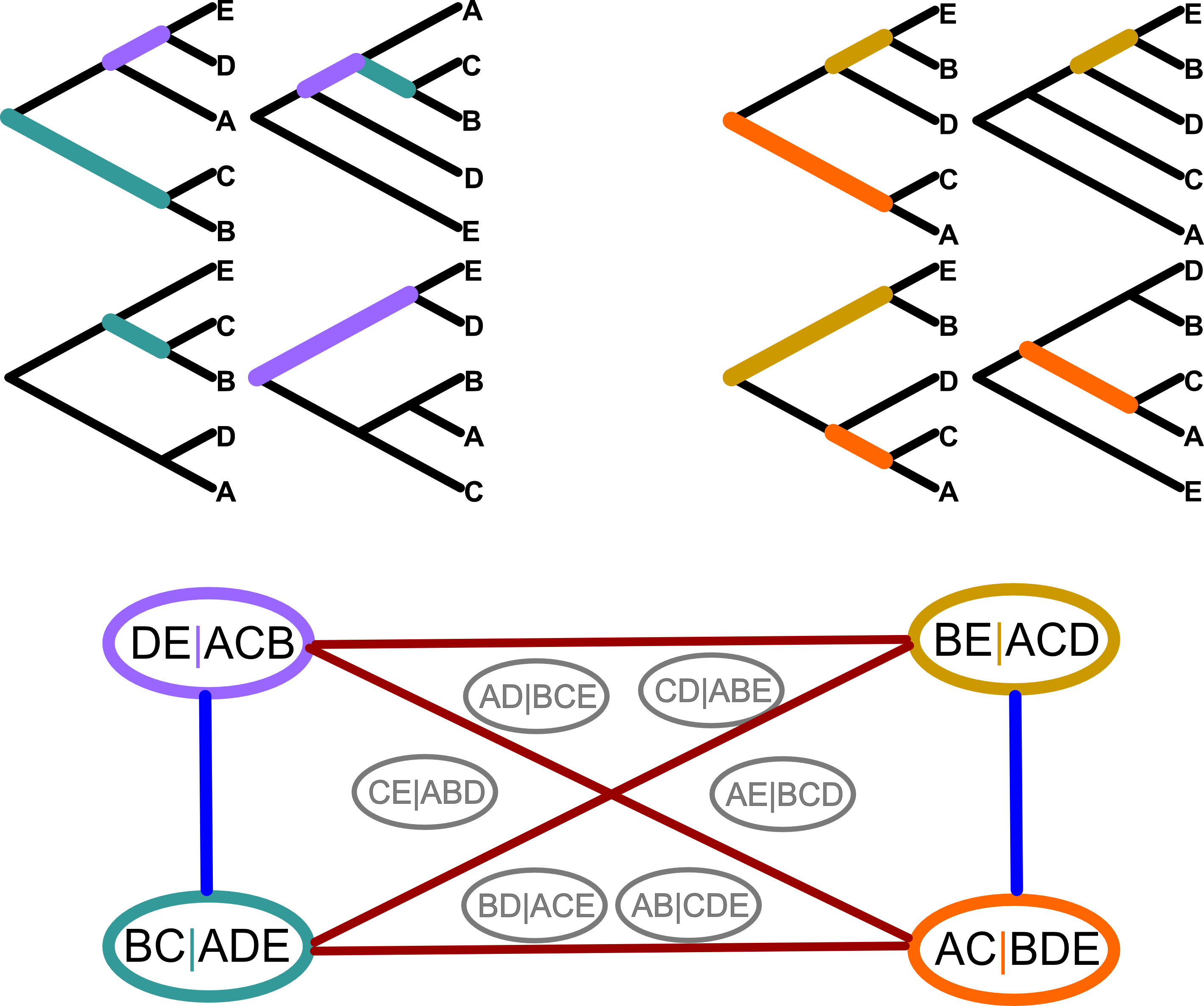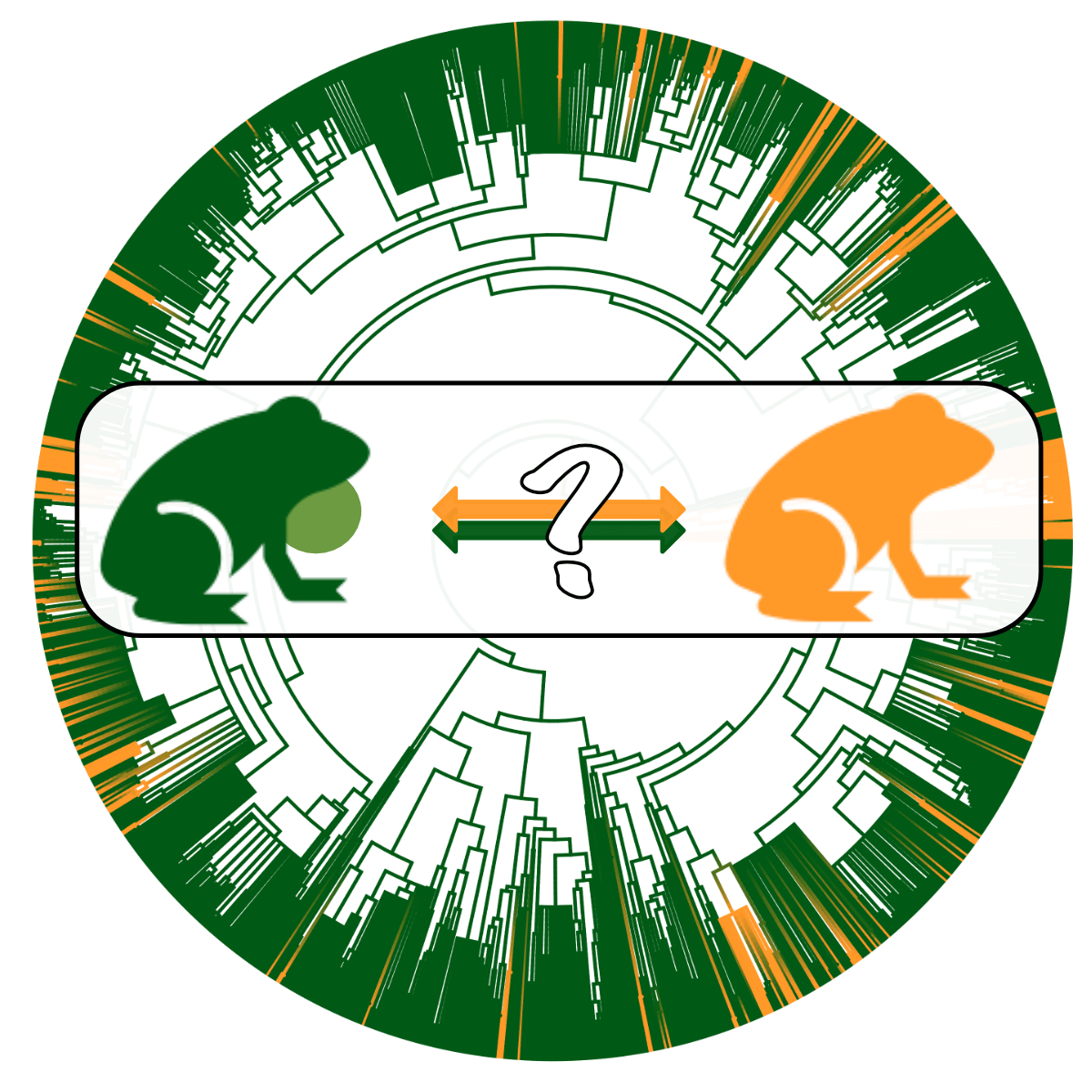Despite a recent plethora of genetic and morphological data, many interesting questions about the relationships between different groups remain unresolved. My research identifies and quantifies the variation in large phylogenetic datasets by developing and testing tools to leverage information that is otherwise overlooked.
Likelihood ratios across loci
In some cases large phylogenomic studies reach conflicting conclusions about important phylogenetic relationships, with each mutually exclusive possibility receiving very strong support in individual studies. I compared the behavior of maximum and marginal likelihood ratios when evaluating alternate resolutions of recalcitrant relationships among major squamate lineages. Mount & Brown, 2022
Network based community detection in tree sets
Variation in inferred gene trees is one of the most striking and consistent observations in phylogenomics. However, summarizing the information in trees is computationally difficult because trees are graphs, not numbers. I'm involved in developing and testing network based methods with the developers of CloudForest (previously called TreeScaper). Networks allow for less information loss than other multidimensional scaling methods. Additionally, we are using both topologies and bipartitions as nodes, providing complimentary information from the same tree set. Some of this work was included in Species Tree Inference: A Guide to Methods and Applications.
Even with the current wealth of genomic data, morphological data is essential for estimating divergence times and fossil placement. However, for many taxa we do not have information about groups of characters (modules) that can be assumed to be evolutionarily linked, unlike genes or loci in genetic data where sequential base pairs are inherently grouped. I am working on applying models and methods used with genetic data to morphological datasets to morphological data to address these issues.
The evolutionary drivers and consequences for the loss of sexually selected traits are relatively unknown compared to trait gain, with the exception of a few model systems. The gain of extravagant sexually selected traits is evolutionarily interesting because these traits are often energetically expensive and risky for males. In contrast, the loss of sexually selected traits receives less attention, even though it can provide equally important information into the process of evolution.
Understanding potential causes of signal loss can inform us on how changing selection pressures and ecology shape morphological evolution.
Vocal sacs in anurans are an ideal trait and study system to examine the loss of a sexually selected trait because of the direct connection between morphology and advertisement calls, which are used to attract mates and guard territories. My current NSF-funded research will provide important information on how and why the selection for these traits is relaxed over time.
Conservation
Throughout my career I have continued to work on conservation genetic projects, using my knowledge of methods to advise on sampling, data collection, and analyses.
I am currently gathering genetic data for one of the species with vocal sac loss, Boreal toads (Anaxyrus boreas) due to their status as a species of concern in Utah. This project will guide conservation efforts towards populations of most concern and increase the effectiveness of translocation efforts from captive breeding efforts.
Past projects include genomic resources for the endangered California Tiger Salamander and invasive turtle removal.




